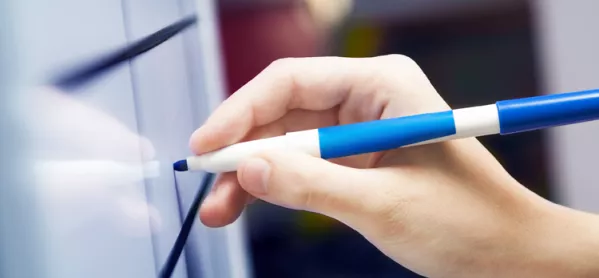There are very few things in education that I can happily say I’ve made my mind up about. However, when it comes to shared writing (a process where the teacher models writing, informed by student contributions), I certainly know where I stand.
Shared writing is important. In fact, I’d even go as far as to say that if you’re not teaching shared writing regularly, then you’re probably not teaching writing very well. And yet, teachers often tell me they don’t like doing it. The pressure of writing live means few teachers do it daily and even fewer do it during an observation, which means that they rarely receive feedback on how to improve.
So, here are some of the fundamentals of effective shared writing.
1. Have a focus
Focus your shared writing session on a particular aspect or aspects of writing. The more focused it is, the more effective it will be. A good rule is to have between one and three focuses, with three being the absolute maximum. Any teacher reading your shared writing after the session should be able to clearly see what your focus was.
2. Keep it short
I have vivid memories of doing a shared writing session as a trainee that was 45 minutes long. It was torture - for me, the kids and, I daresay, my mentor. I now set myself a maximum of 20 minutes in upper key stage 2, 15 minutes in lower KS2 and 10 minutes in KS1.
3. Model using a plan
We’ve all been there. The students spend a whole lesson crafting a beautiful plan and then leave it in their trays and never refer to it when they actually come to do independent writing. In shared writing sessions, have your plan on display and make explicit reference to it throughout the process, making it clear how to use a plan when writing.
4. Encourage ideas
To promote discussion, seat children in mixed attainment pairs and take regular breaks for them to talk to their partners and generate ideas. Get them to draft key words, phrases or sentences; so that they will have plenty to contribute during the shared exercise and will have a bank to use later in their own writing. Also don’t be afraid to let children shout out ideas and have someone bank these somewhere in the classroom.
5. Spark their imaginations
Good writing requires stimulus. Beginning a session with a drama activity, a mind walk (a guided day dream), a piece of music, a film or an image will help students to come to the shared writing full of ideas.
6. Model drafting
Involve the children in reading work back and making improvements, making reference to the day’s success criteria and checking for grammar and punctuation errors. Speak your internal writer’s dialogue out loud and make the decisions you are making explicit. For tricky spellings, model the appropriate strategy to give the word your best effort, but don’t be afraid to circle words you’re unsure about with the clear intention to check it later with a dictionary (using dictionaries mid-session is a sure way to break the creative flow of writing). The result may not look pretty but it is essential for children to see and hear writing as a drafting - and a sometimes messy - process. You can always publish a final draft later.
7. Display the work
Stick your shared writing up on the learning wall or hand out copies. Children should be able to refer to the draft when creating their own. At first, less confident writers will want to stick closely to the model and this should be encouraged. As the year progresses, they will become more confident and will want to write more independently.
8. Mix it up
I’ve never understood the need for a session to be either exclusively modelled (watch me) or exclusively shared (let’s write together). I much prefer a mixture of the two. For example, if my focus is using fronted adverbials, I will model this explicitly in my first few sentences. Then, when I think the children have got the idea, I will write a sentence with a blank space at the beginning and ask children for contributions.
9. Do it every day and try to enjoy it
Doing a shared writing session every day is essential in developing confidence, improving attainment, and perhaps most importantly, promoting the idea that writing is an enjoyable and creative process.
DM Crosby is a deputy headteacher at a primary school in the East Midlands and tweets as @DM_Crosby




